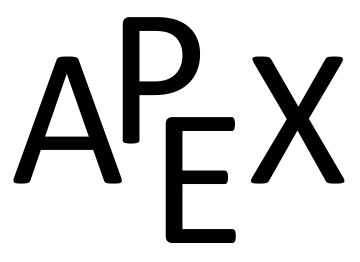Let \(f(x,y) = \frac{\sin(xy)}{x+y}\text{.}\) We are to show that \(\lim\limits_{(x,y)\to (0,0)} f(x,y)\) does not exist by finding the limit along the path \(y=-\sin(x)\text{.}\) First, however, consider the limits found along the lines \(y=mx\) as done above.
\begin{align*}
\lim_{(x,mx)\to (0,0)} \frac{\sin\big(x(mx)\big)}{x+mx} \amp = \lim_{x\to 0} \frac{\sin(mx^2)}{x(m+1)}\\
\amp = \lim_{x\to 0} \frac{\sin(mx^2)}{x}\cdot\frac1{m+1}\text{.}
\end{align*}
By applying L’Hospital’s Rule, we can show this limit is 0 except when \(m=-1\text{,}\) that is, along the line \(y=-x\text{.}\) This line is not in the domain of \(f\text{,}\) so we have found the following fact: along every line \(y=mx\) in the domain of \(f\text{,}\) \(\lim\limits_{(x,y)\to(0,0)} f(x,y)=0\text{.}\) Now consider the limit along the path \(y=-\sin(x)\text{:}\)
\begin{align*}
\lim_{(x,-\sin(x) )\to (0,0)} \frac{\sin\big(-x\sin(x) \big)}{x-\sin(x) } \amp = \lim_{x\to0} \frac{\sin\big(-x\sin(x) \big)}{x-\sin(x) }
\end{align*}
Now apply L’Hospital’s Rule twice:
\begin{align*}
\amp = \lim_{x\to 0}\frac{\cos\big(-x\sin(x) \big)(-\sin(x) -x\cos(x) )}{1-\cos(x) } \quad \left(0/0\right)\\
\amp = \lim_{x\to 0}\frac{-\sin\big(-x\sin(x) \big)(-\sin(x) -x\cos(x) )^2+\cos\big(-x\sin(x) \big)(-2\cos(x) +x\sin(x) )}{\sin(x) }\text{.}
\end{align*}
This last limit is of the form “\(2/0\)”, which suggests that the limit does not exist. Step back and consider what we have just discovered. Along any line \(y=mx\) in the domain of the \(f(x,y)\text{,}\) the limit is 0. However, along the path \(y=-\sin(x)\text{,}\) which lies in the domain of \(f(x,y)\) for all \(x\neq 0\text{,}\) the limit does not exist. Since the limit is not the same along every path to \((0,0)\text{,}\) we say \(\lim\limits_{(x,y)\to (0,0)}\frac{\sin(xy)}{x+y}\) does not exist.

